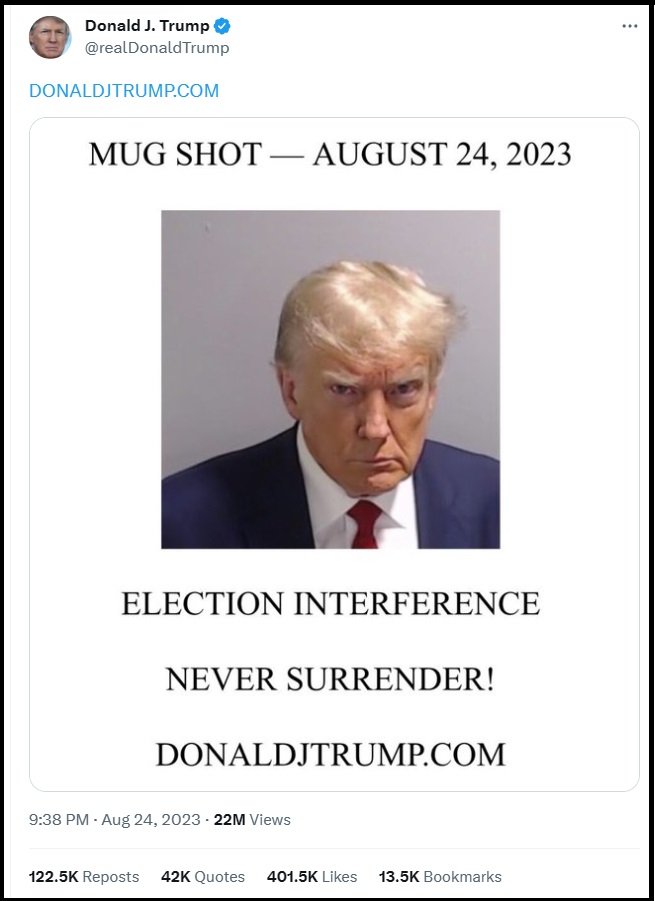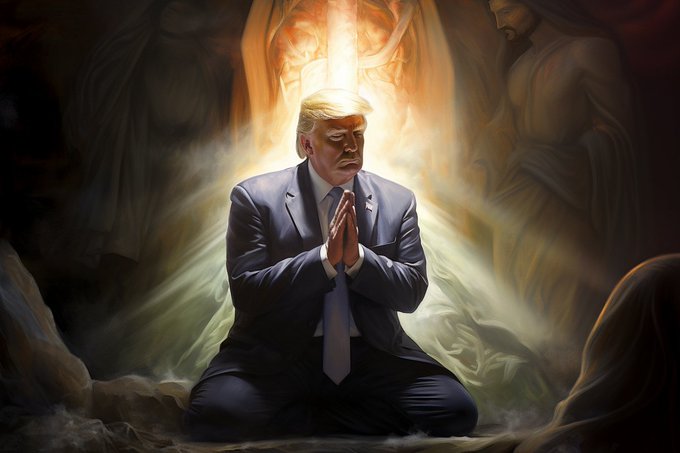I’ve been quiet, because I’ve been angry. The political events of the past four days have made me seriously reconsider options for correction. The politically motivated arrest of U.S. President Donald Trump is a line crossed I never thought we would experience in our lifetime.
 We have watched international politics with a semi-detached view; at least, I will admit that I have. Watching, looking at arrests of political opponents from the safety of our devices and the comfort of reference points that always seemed distant, over there, certainly not here.
We have watched international politics with a semi-detached view; at least, I will admit that I have. Watching, looking at arrests of political opponents from the safety of our devices and the comfort of reference points that always seemed distant, over there, certainly not here.
Perhaps, just perhaps, globalism has hit that metastatic phase where every cell and every organ in our global world is now being attacked by a virus no longer contained at origin; I don’t know. What I do know is that our landscape has changed; where we stand as a nation is entirely different, yet we seemingly never moved an inch.
It’s almost like we are standing on a stage and the backdrop changed behind us. If we take a national selfie, everything looks completely different. When I look at the resulting picture, I do not like this image of myself, this place, this perspective, and yet… I am exactly the same.
Life has taught me the best thing to do when I feel a sense of rage is to get quiet. Prudence and wisdom teach you to lower the blood flow, evaluate the external and proceed with caution, because the action that flows from the rage mindset generates collateral damage. Serious collateral damage. So, I shut down, walk away, turn my eyes to the truest of all true things, and pray.
There was a time when mules were of great value in the creation of what sustains all human community life. Mules that pulled ploughshares were evaluated with a level of discernment that would rival modern NFL drafts.
Entire communities, often spread miles apart, knew the strength of each other person’s mules. Auctions would bring people from great distances, and there were quiet men of great knowledge who understood the invisible traits that qualified the best mules.
The best, the absolute best, were held with a regard even more valuable than the land they walked. The remarkable thing about these mules was their diversity in physical appearance. Ultimately, what made the great mules of such value was the part that could not be seen, the part the quiet men looked for.
Those mules were like the men who recognized them, and the crowd would whisper to each other in muted tones as they watched the subtle yet deliberate movement of the quiet men with great intensity. Words would be spoken of a silent language that would take place between the quiet men and the mules afore them. There was something invisible being measured and evaluated. Eventually, decisions were made.
 The hands behind the plows were ultimately the beneficiaries of the advice from the quiet men, and those calloused hands would become quiet men themselves in later years.
The hands behind the plows were ultimately the beneficiaries of the advice from the quiet men, and those calloused hands would become quiet men themselves in later years.
When the collar reached the shoulder, the best mules did not need instruction, they knew what came next. The silent language that transferred from the auction to the destination continued. Over time, the hands atop the plow and the mule became of one purpose. This is when the legends of some mules began.
The best mules had something within them that resolved to the task at hand. The scale and scope of the topsoil was the canvas, but the raw and often harsh task at hand was the real challenge. For some lesser mules the effort required in new ground was too much, but for the best it was just another day; although perhaps a day of week, or month when the bone structure formed the shape of the collar.
The hands upon the plow tested the ability of the mule. It had to be done dispassionately if the family was to achieve success, and ultimately if the community were to thrive.
When the blade was moved a degree deeper, the collar pulled just that much tighter – deeper. The best mules knew what those sensations implied. There were times for looking forward, but when the resistance was the strongest, these were not those times. At these times the mules looked down at only the two feet in front of them, and they focused on those two feet, and then the next, and then the next…. until they felt the pressure subside. Then it was time to turn.
There were lands where no mules could succeed – miles of square acres containing buried rock and dirt compacted over centuries, long before humans started apportioning it. However, there were some mules who had the capability to move that soil, plow through those rocks, and with nothing more than brute force create the opportunity for harvest. This is what the quiet men were looking for. These were the silent questions exchanged.
I think about those quiet mules returning to their stables as the sun dropped, and the feeling of the straps being scraped across the back as they are removed. I think about that silent message as the farmers hand touches the side of the neck with great appreciation. I wonder if the approval connects to the determination that will follow at sunrise. Is this the trait the quiet men were looking for? Is determination the invisible language within that interview, an auction now long in the past? I think it was.
The events of the past several weeks have shown us there are harsh landscapes ahead. We are traveling to places that have never been contemplated. We are witnessing things accepted that were always out of bounds. There are no boundaries in this new place. This land is hard, and it will take quiet men with callouses to guide us through it.
It is time for the old mules to revisit the legend of their kin.
It is time for the counsel of quiet men.
It is a time to remember the purpose of that old collar hanging on the wall.
It is a time for that unspoken language to be understood.
It is time for the old mules to take lead and plow the terrain.
For the nervous insta-selfie readership who are not quite sure what comes next, find an old mule and ask them,…


